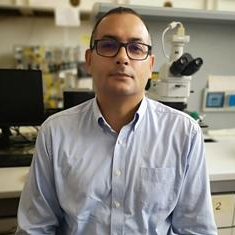State-of-the-Art Membrane Science and Technology in Italy 2021, 2022
A special issue of Membranes (ISSN 2077-0375).
Deadline for manuscript submissions: closed (16 December 2022) | Viewed by 9756
Special Issue Editor
Interests: membrane science and technology; crystallization—fundamentals and operations; water treatment processes; membranes materials—design and development; bioseparation and downstream processes
Special Issues, Collections and Topics in MDPI journals
Special Issue Information
Dear Colleagues,
Membranes and membrane operations have been receiving increasing interest since several decades, with significant involvements in water purification and desalination, where they have become the dominant technologies. However, the constant development of new membranes materials and configurations is essential to support and to expand the growing attention in those and in new advanced sectors like energy production (fuel cells, hydrogen production, salinity gradients), biotechnology, healthcare and medical applications (tissue engineering, artificial organs, regenerative medicine, in-vitro devices), gas separations and intensified manufacturing processes, to cite only a few.
Membrane science and technology is today one of the fast-growing and multidisciplinary research areas also in Italy. Academic scientists and industries in Italy have now demonstrated a strong commitment to promoting the advancements of membranes operations, considered as the future of the technology development in several strategic sectors in the fields of water, energy, health and environment.
This Special Issue aims to highlight and to promote recent advances in membrane science and technology research in Italy, through publishing original research and review papers. Topics of particular interest, but are not limited to, include:
- Sustainable membranes manufacture processes and advanced membrane characterization tools
- Membranes for medical, biotechnological and healthcare applications
- Membrane reactors, bioreactors and photoreactors
- Membranes for advanced separations and high-tech applications
- Membrane contactors: crystallizers, condensers, distillers, emulsifiers
- Membranes and membrane operations in agro-food and (bio)pharmaceutical industry
- Membranes for environmental remediation and mining from waste streams
- Membranes for green chemistry applications and sustainable processes
- Membranes for energy production from salinity gradients
- Membranes and membrane operations for renewable hydrogen production
- Membranes for gas separations and carbon capture & storage
- Modelling and simulations of membrane transport and membrane-based processes operation
Dr. Gianluca Di Profio
Guest Editor
Manuscript Submission Information
Manuscripts should be submitted online at www.mdpi.com by registering and logging in to this website. Once you are registered, click here to go to the submission form. Manuscripts can be submitted until the deadline. All submissions that pass pre-check are peer-reviewed. Accepted papers will be published continuously in the journal (as soon as accepted) and will be listed together on the special issue website. Research articles, review articles as well as short communications are invited. For planned papers, a title and short abstract (about 100 words) can be sent to the Editorial Office for announcement on this website.
Submitted manuscripts should not have been published previously, nor be under consideration for publication elsewhere (except conference proceedings papers). All manuscripts are thoroughly refereed through a single-blind peer-review process. A guide for authors and other relevant information for submission of manuscripts is available on the Instructions for Authors page. Membranes is an international peer-reviewed open access monthly journal published by MDPI.
Please visit the Instructions for Authors page before submitting a manuscript. The Article Processing Charge (APC) for publication in this open access journal is 2700 CHF (Swiss Francs). Submitted papers should be well formatted and use good English. Authors may use MDPI's English editing service prior to publication or during author revisions.






